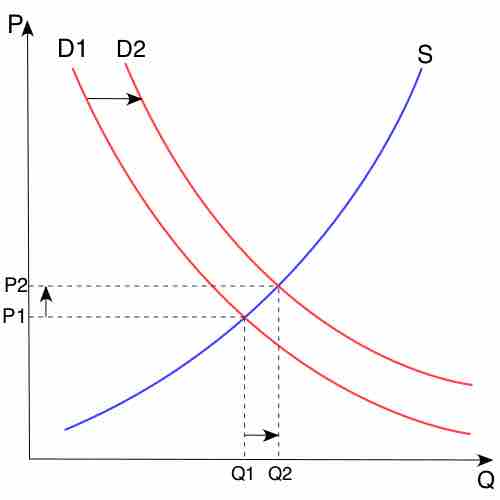The demand curve is a graphical representation of an economic agent's willingness to purchase a given quantity of a good or service at a specific price based on preferences, income, and other prevailing factors at a given point in time. Demand curves in combination with supply curves, which depict the price to quantity relationship of producers, are a representation of the goods and services market. Where the two curves intersect is market equilibrium, the price to quantity relationship where demand and supply are equal.
Movements in demand are specific to either movements along a given demand curve or shifts of the entire demand curve.
Movements along the demand curve are due to a change in the price of a good, holding constant other variables, such as the price of a substitute. If the price of a good or service changes the consumer will adjust the quantity demanded based on the preferences, income and prices of other factors embedded within a given curve for the time period under consideration.
Shifts in the demand curve are related to non-price events that include income, preferences and the price of substitutes and complements. An increase in income will cause an outward shift in demand (to the right) if the good or service assessed is a normal good or a good that is desirable and is therefore positively correlated with income. Alternatively, an increase in income could result in an inward shift of demand (to the left) if the good or service assessed is an inferior good or a good that is not desirable but is acceptable when the consumer is constrained by income .

Demand Curve
A demand curve provides an economic agent's price to quantity relationship related to a specific good or service. Movements along a demand curve are related to a change in price, resulting in a change in quantity; shifts is demand (D1 to D2) are specific to changes in income, preferences, availability of substitutes and other factors.
A change in preferences could result in an increase (outward shift) or decrease (inward shift) in the quantity level desired for a specific price; while a change in the price of a substitute, could result in an outward shift if the price of the substitute increases and an inward shift if the substitute's price decreases. The demand curve for a good will shift in parallel with a shift in the demand for a complement.